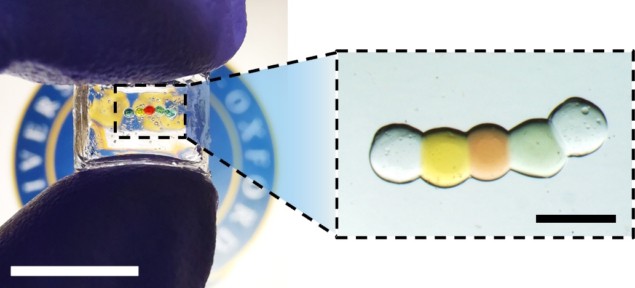
Biointegrated devices that can interact with cells could help target drugs and accelerate wound healing. One challenge facing researchers is powering these tiny machines.
Conventional electronic circuits require a lot of energy — on the order of tens to hundreds of microamperes, or a few volts — to stimulate cells or tissue. With the latest advancements in materials science and engineering now at their fingertips, researchers are turning instead to power sources grounded in physiology. A power source driven by ions, for example, would be twistable and compressible, tissue-like in its stiffness and mechanical properties, allowing it to seamlessly interface with the external components of a biointegrated device.
“If we want to use electrons to stimulate cells, that either needs a large electric field to create a double layer, so one side is electrons and the other side is ions, or you need a high voltage to induce some redox reactions,” explains Yujia Zhang, a postdoctoral researcher at the University of Oxford. “We found that if we can use ions to directly stimulate cells or tissue, that needs only a very low energy input…like, nanoamperes to microamperes in terms of current levels.”
Zhang and his colleagues from the Bayley Group have developed a miniature battery that consists of a chain of nanolitre-sized hydrogel droplets and an ion gradient, reporting their findings in Nature.
Each droplet in the chain is a three-dimensional network of polymer chains containing a large quantity of absorbed water and each has a different composition to establish a salt concentration gradient. Droplets are separated from their neighbours by a lipid bilayer that provides mechanical support and prevents ions from flowing between droplets.
The battery is turned “on” by disrupting the lipid bilayers (changing the medium in which the droplets are housed) and forming a continuous hydrogel (by cooling the droplet chain down to 4°C). The energy released from the ion gradients is transformed into electricity when the end droplets are connected to electrodes.

The researchers found that the current from their battery persisted for over 30 mins at 65 nW, even after storing the battery for 36 h. A network of droplets deposited in a hexagonal, flower-like assembly lit up a diode and elicited a calcium response from a three-dimensional network of neural cells.
Ultimately, the hydrogel structure could act as a power source for the external components of a biointegrated device.
“We are one of the leading pioneers to show ionic stimulation based on neural microtissues,” Zhang says. “In the last few years, because of the developments by materials scientists, we can create better ways to control those ions by using different ion-selective polymers based on the charge of different cations or anions.”

External skin patch transfers power to medical implants
While the researchers triggered the battery via a temperature change in the current study, Zhang says that the research team is now controlling the battery’s off–on switch using light signalling. Other methods of activation include pH levels or the presence of certain levels of biomolecules, such as glucose.
“Biological scientists give us initiative to do biostimulation. They give us the goals to why this biostimulation is important,” says Zhang. “Our technique provides a platform…we can integrate it with other dopants, biomolecules, protein nanopores, etc, to achieve a lot of different types of functions and applications. So it’s kind of like an arsenal, and this work is the first step.”
- SEO Powered Content & PR Distribution. Get Amplified Today.
- PlatoData.Network Vertical Generative Ai. Empower Yourself. Access Here.
- PlatoAiStream. Web3 Intelligence. Knowledge Amplified. Access Here.
- PlatoESG. Carbon, CleanTech, Energy, Environment, Solar, Waste Management. Access Here.
- PlatoHealth. Biotech and Clinical Trials Intelligence. Access Here.
- Source: https://physicsworld.com/a/speaking-the-language-of-cells-to-power-tiny-machines/



